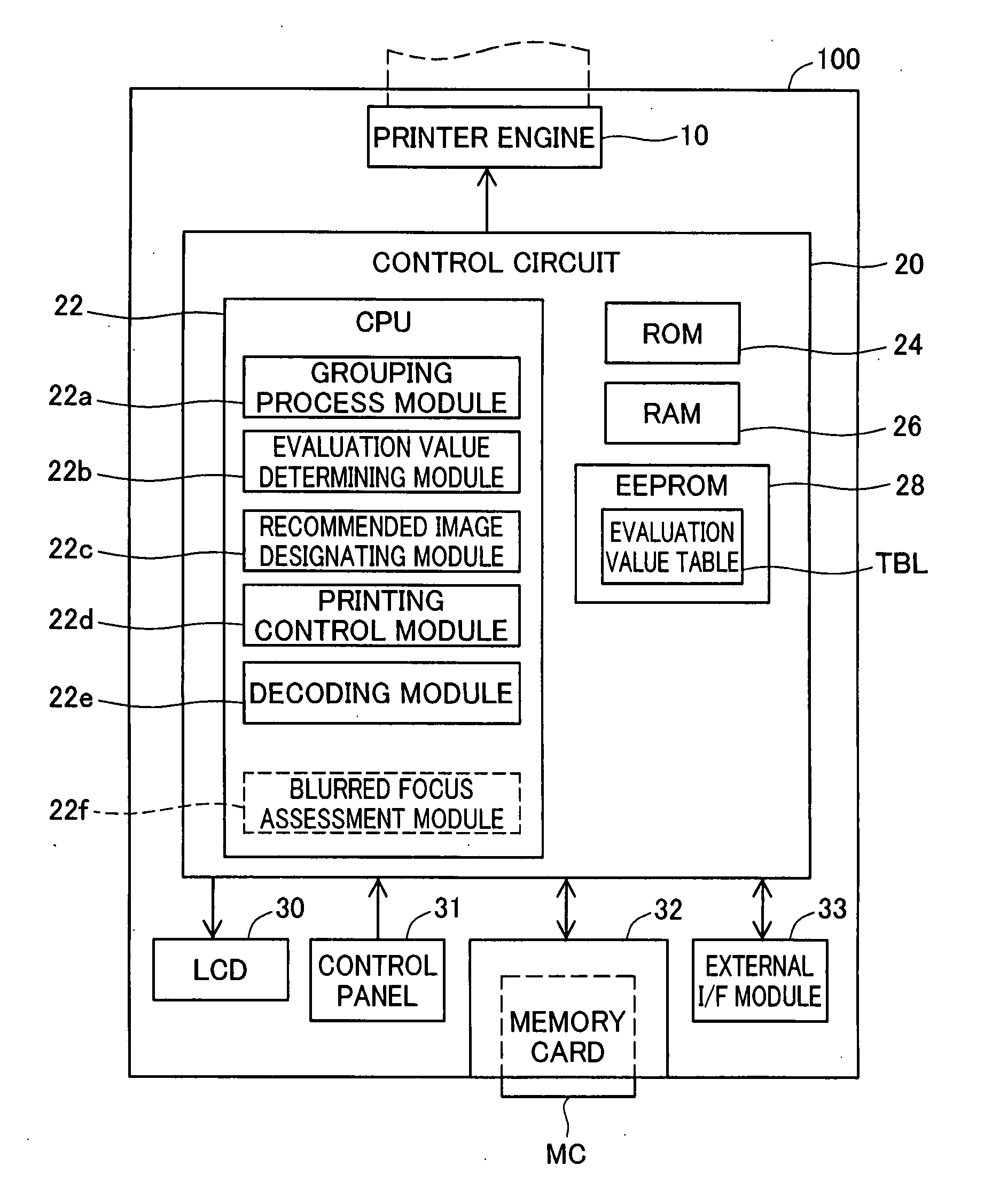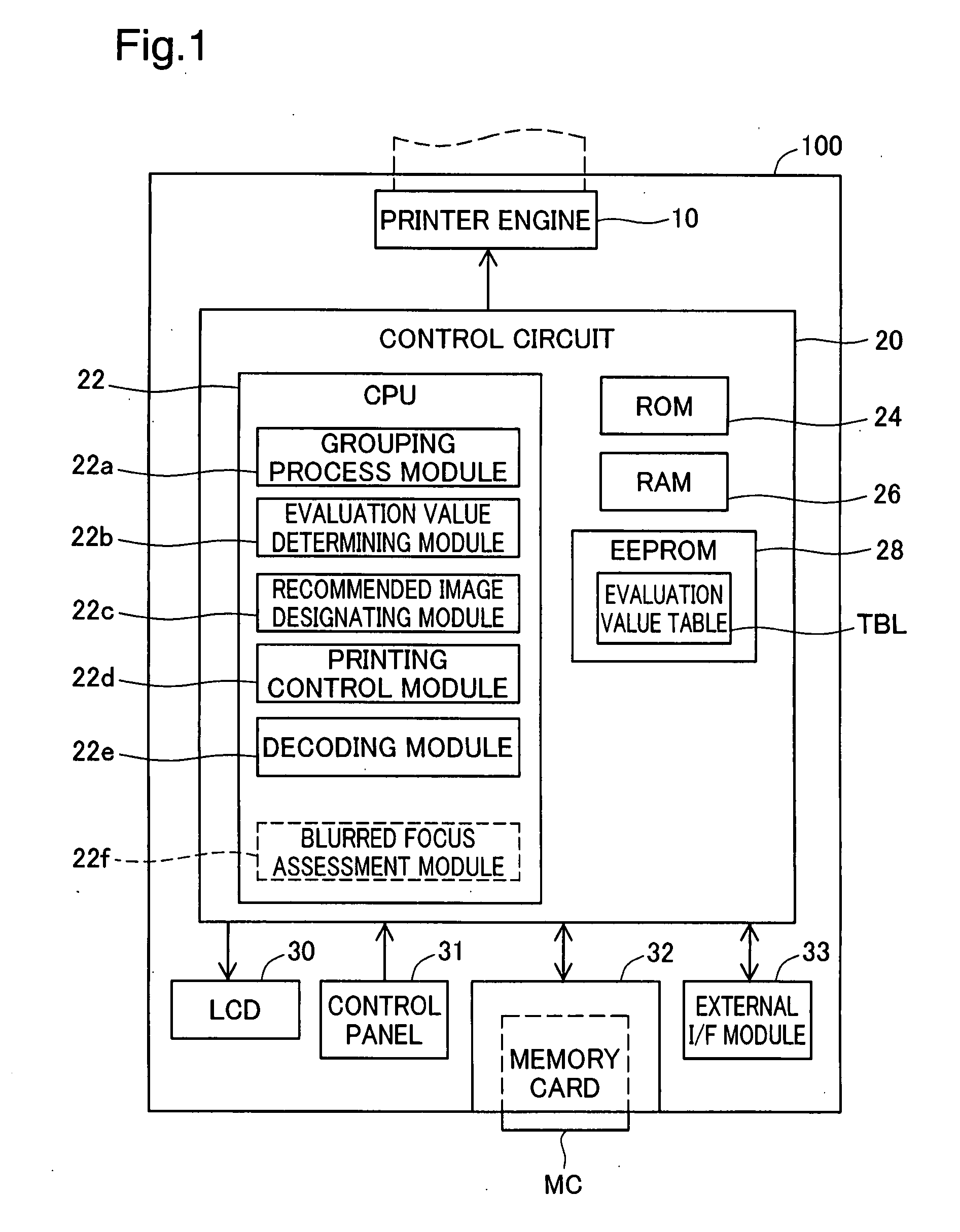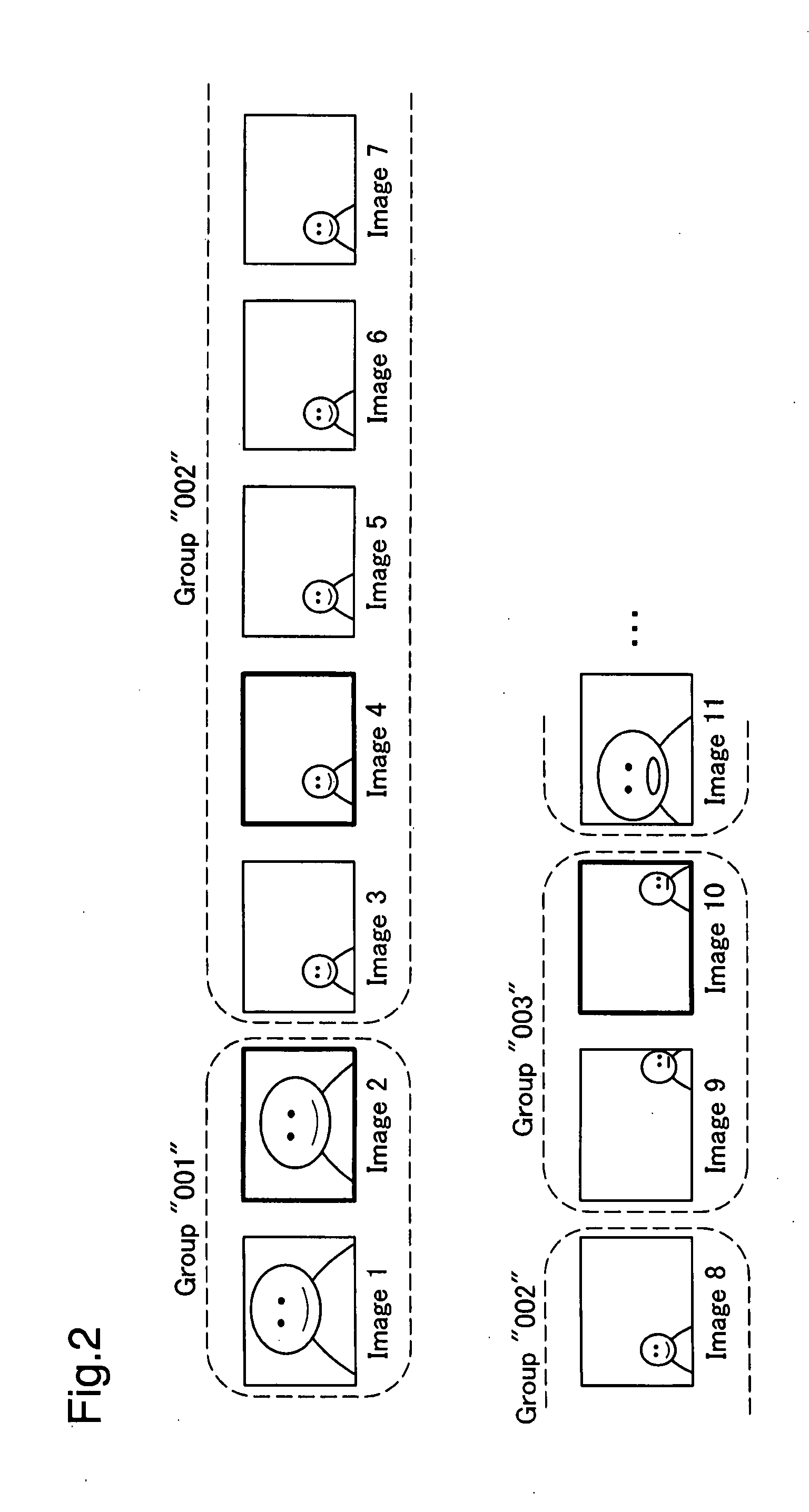Printing device
a printing device and image technology, applied in the field of printing devices, can solve the problems of long time to complete, difficult use of retrieving a desired image from among the large number of stored images, and difficult to retrieve a desired image from among the large number of stored images, and achieve the effect of easy process
- Summary
- Abstract
- Description
- Claims
- Application Information
AI Technical Summary
Benefits of technology
Problems solved by technology
Method used
Image
Examples
embodiment 1
A. EMBODIMENT 1
A1. General Configuration of Printer
[0034]FIG. 1 is an illustration of the general configuration of a printer as a first embodiment of the present invention. The printer 100 is equipped with a control circuit 20; a printer engine 10 connected to the control circuit 20; a liquid crystal display 30; a control panel 31; a memory card slot 32; and an external interface 33.
[0035]The printer engine 10 is furnished with a carriage (not shown) having ink cartridges, not shown, installed thereon, and a motor for driving the carriage (not shown). The printer engine 10 is the functional portion that actually executes printing. The liquid crystal display 30 is a functional portion for displaying menus of various kinds. The control panel 31 is furnished with control buttons (not shown) allowing the user to make various settings. The memory card slot 32 is a functional portion for reading data from an inserted memory card. The external interface 33 is an interface for connecting a...
embodiment 2
B. EMBODIMENT 2
[0068]In Embodiment 1 discussed previously, designation of the recommended image within a group is made on the basis of an evaluation value indicating the quality of composition. However, this leaves a risk of selecting as the recommended image a flawed image that, while having good composition, has blurred focus. Therefore, in the present embodiment, a blurred focus assessment process, to be discussed later, is carried out to designate images free from blurred focus as the recommended images. Additionally, the grouping process is accelerated by utilizing thumbnail images for executing the process.
[0069]FIG. 6 is a flowchart depicting the procedure of the recommended image printing process in Embodiment 2. The procedure of FIG. 6 is the same as the procedure of FIG. 3 except that the content of Steps S202-226 of FIG. 3 has been modified, and Steps S300, S350, S352, and S354 have been added between Step S226 and Step S228. Steps S202a-224a of FIG. 6 differ from Steps S...
embodiment 3
C. EMBODIMENT 3
[0076]FIG. 7 is a flowchart depicting the recommended image printing process of Embodiment 3. The procedure of FIG. 7 is the same as the procedure of FIG. 3 except that Step S502 has been added between Step S218 and Step S220.
[0077]In Step S218, in the event that an image selected for processing is determined to be similar to the immediately preceding image, unlike Embodiment 1, the grouping process module 22a will then further determine whether the number N of images belonging to the immediately preceding group is less than a threshold value Na, where N is an integer equal to or greater than 2. Here, the “number N of images belonging to the immediately preceding group” is not considered to include the image currently selected for processing, and refers to the number of images assigned to the immediately preceding group up to that point in time. In the present embodiment, the threshold value Na is assumed to be “5,” but could be set to any integer equal to or greater ...
PUM
 Login to View More
Login to View More Abstract
Description
Claims
Application Information
 Login to View More
Login to View More - R&D
- Intellectual Property
- Life Sciences
- Materials
- Tech Scout
- Unparalleled Data Quality
- Higher Quality Content
- 60% Fewer Hallucinations
Browse by: Latest US Patents, China's latest patents, Technical Efficacy Thesaurus, Application Domain, Technology Topic, Popular Technical Reports.
© 2025 PatSnap. All rights reserved.Legal|Privacy policy|Modern Slavery Act Transparency Statement|Sitemap|About US| Contact US: help@patsnap.com



